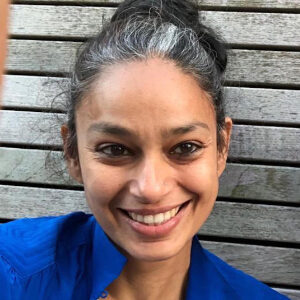
Prajna Desai is an art historian, critic, curator, and educator. Prajna's thinking and work unfolds at the intersection of culture, environment, and progressive storytelling for change. Over the past fifteen years, her journey has involved research and leadership positions within the corporate art world in diversity-driven institutional initiatives, gallery exhibitions, and scholarship; in academia through teaching and publishing; and by way of large-scale public programming and curatorial for non-profit organisations, in places as varied as Latin America, Japan, the United States, and India.
Many people see art as leisure but that misses how its workings have a magnetic ability to cultivate and unite ambition and re-envision the limits of what’s possible. This is what Warren Buffet underscored by calling his conglomerate a masterpiece, a museum, and an unlimited canvas all rolled into one—that art is essential, not recreational, whether or not you’re an art lover. In short, as a world where creative and operational intelligence combine in transformative and pleasurable ways, art is the business companies ought to learn from.
In the world of art, where the artist captures a fluid mix of instinct and enterprise, the artist studio is likened to a laboratory, the artist collective to a democratized guild, the gallery to an incubator, the curator to a catalyst, a museum to a think tank, and a landmark exhibition to a white paper. Varied as it is, this ecosystem is unanimous, that art gets its fuel from diversity, disruption, and discussion; enterprise and stamina; and failures that inspire breakthroughs.
In bringing this message to business, Prajna’s masterclass shows how naturalizing art’s professional mechanisms in organizational behaviour can equip companies with tools to identify and retain agile talent for increasingly tech-enabled ways of doing business; stay nimble by approaching strategy as process not one-time decision, and creatively leverage risk to seize opportunity. But the real edge art will give companies over the long haul is linking work with purpose and fulfilment through people empowered with agency, choice, and equity.
Participants
Organisations
The masterclass introduces the analogy of different styles and strategies of making, curating, exhibiting art, organising collections, and strategising museum direction to define SIX simple yet energising substitution techniques that participants can learn and adopt to reorient how they think about work, set new directions, and inspire themselves and each other.
These techniques are discussed and interpreted by looking at images and video clips of artworks and exhibitions installations, as well as through IRL art exercises (wherever possible).
SIX TECHNIQUES